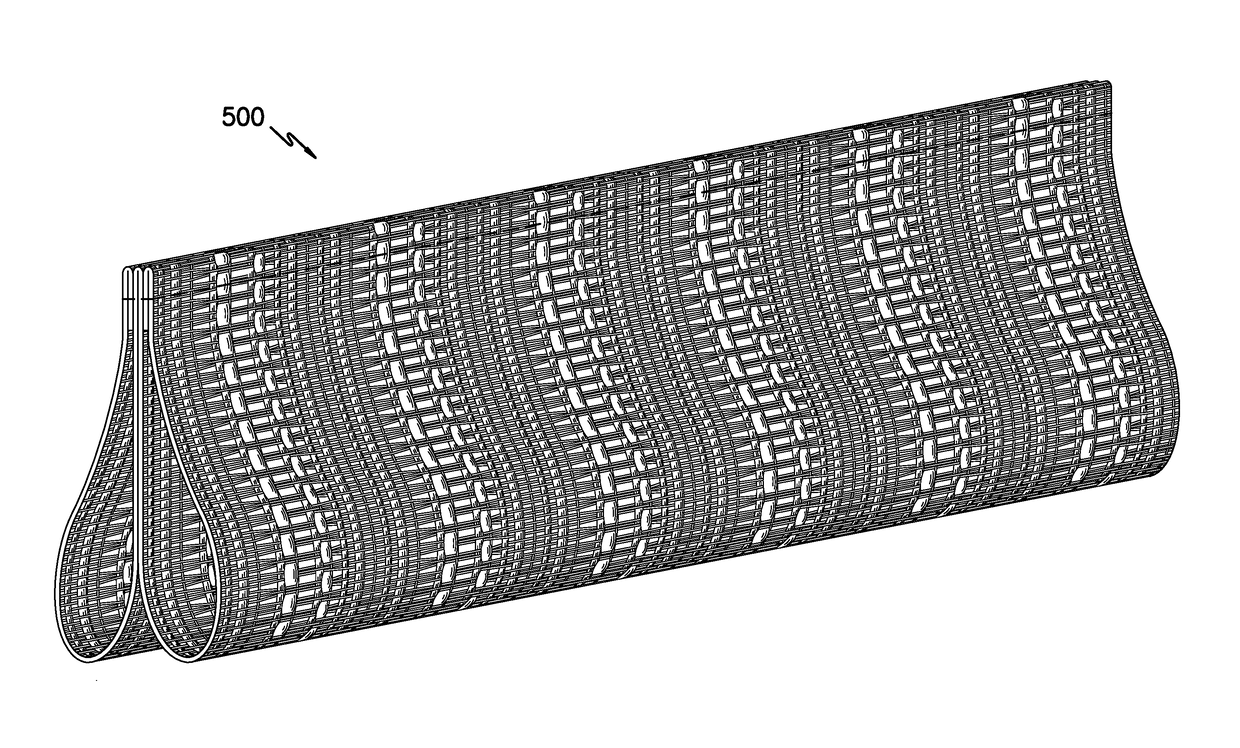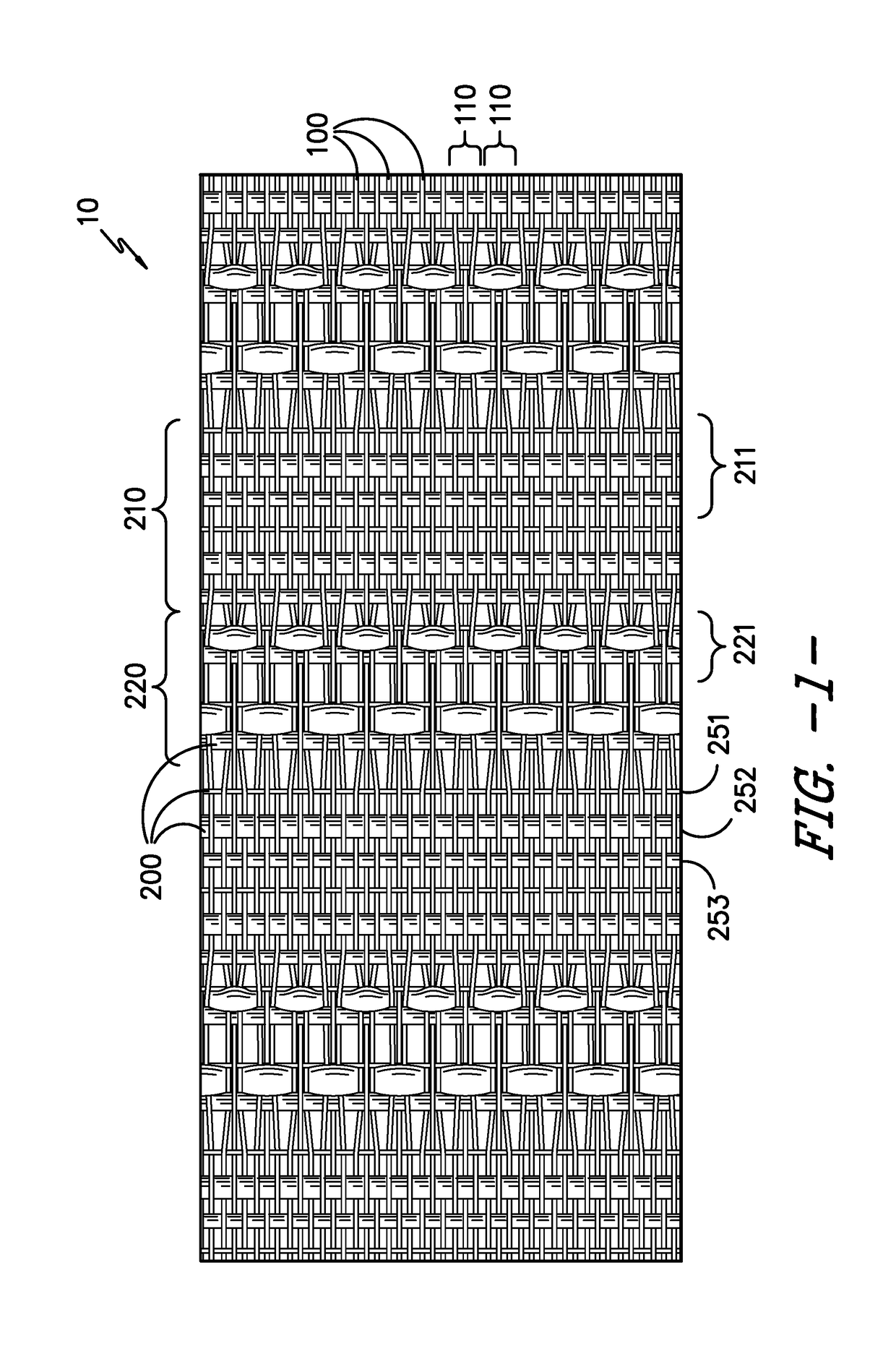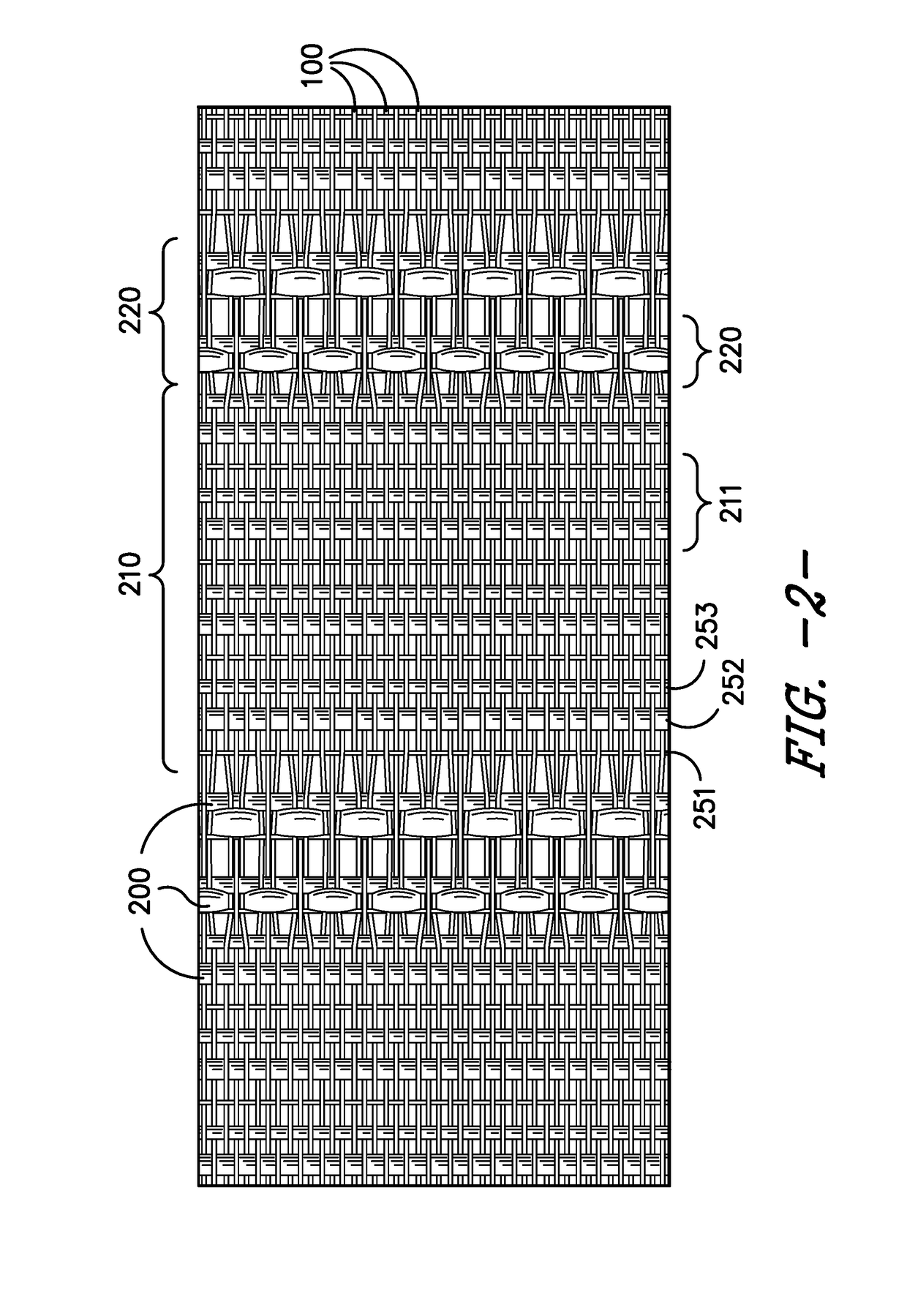Partial float weave fabric
- Summary
- Abstract
- Description
- Claims
- Application Information
AI Technical Summary
Benefits of technology
Problems solved by technology
Method used
Image
Examples
example 1
[0060]A textile fabric (shown in FIG. 1) having the following characteristics was woven on a Dornier HTVS 4 / S 220 cm machine:
[0061]Warp: 48 ends per inch of 520d denier PET monofilament yarn;
[0062]Filling: 18 picks per inch, in a 3 pick repeat (Total repeat of design is 18)[0063](1) 350 denier nylon 6 monofilament yarn;[0064](2) double insertion of 681 denier textured PET multifilament yarn (two-ply 300 denier / 68 filaments;[0065](3) single insertion of 681 denier textured PET multifilament yarn (two-ply 300 denier / 68 filaments;
[0066]The first weave zones were a plain weave containing 2 full sets of the pick repeat. The warp yarns were organized into groups of three with the inner yarn floating and the outer 2 yarns forming a plain weave stitch. The floating yarn floated over the double-inserted yarns (#2 from above) in each repeat of the pick repeat pattern. The partial float zones contained 2 full sets of the pick repeats. The fabric had a warp tensile of 265 lbs / in and a 4×8 filli...
example 2
[0067]A textile fabric (shown in FIG. 2) was constructed the same as Example 1, except that the first weave contains 4 full sets of the plain weave zone repeat.
example 3
[0068]A textile fabric having the following characteristics was woven on a Dornier HTVS 4 / S 220 cm machine. The multifilament polyester filling yarns were double. The fabric was finished, slit and sewn into a tear-drop configured innerduct structure, as shown in FIG. 4, with two compartments, corresponding to Milliken & Company MaxCell® style 4418-2.
[0069]Warp: 48 ends per inch of 520 denier PET monofilament yarn;
[0070]Filling: 18 picks per inch, in a six pick repeat (1) 520 denier nylon 6 monofilament yarn; (2) double insertion of 681 denier textured PET multifilament yarn (two-ply 300 denier / 68 filaments; (3) double insertion of 681 denier textured PET multifilament yarn (two-ply 300 denier / 68 filaments; (4) 350 denier nylon 6 monofilament yarn; (5) double insertion of 681 denier textured PET multifilament yarn (two-ply 300 denier / 68 filaments; and (6) double insertion of 681 denier textured PET multifilament yarn (two-ply 300 denier / 68 filaments. The weight of the fabric was 5.8 ...
PUM
| Property | Measurement | Unit |
|---|---|---|
| Width | aaaaa | aaaaa |
Abstract
Description
Claims
Application Information
 Login to View More
Login to View More - R&D
- Intellectual Property
- Life Sciences
- Materials
- Tech Scout
- Unparalleled Data Quality
- Higher Quality Content
- 60% Fewer Hallucinations
Browse by: Latest US Patents, China's latest patents, Technical Efficacy Thesaurus, Application Domain, Technology Topic, Popular Technical Reports.
© 2025 PatSnap. All rights reserved.Legal|Privacy policy|Modern Slavery Act Transparency Statement|Sitemap|About US| Contact US: help@patsnap.com



